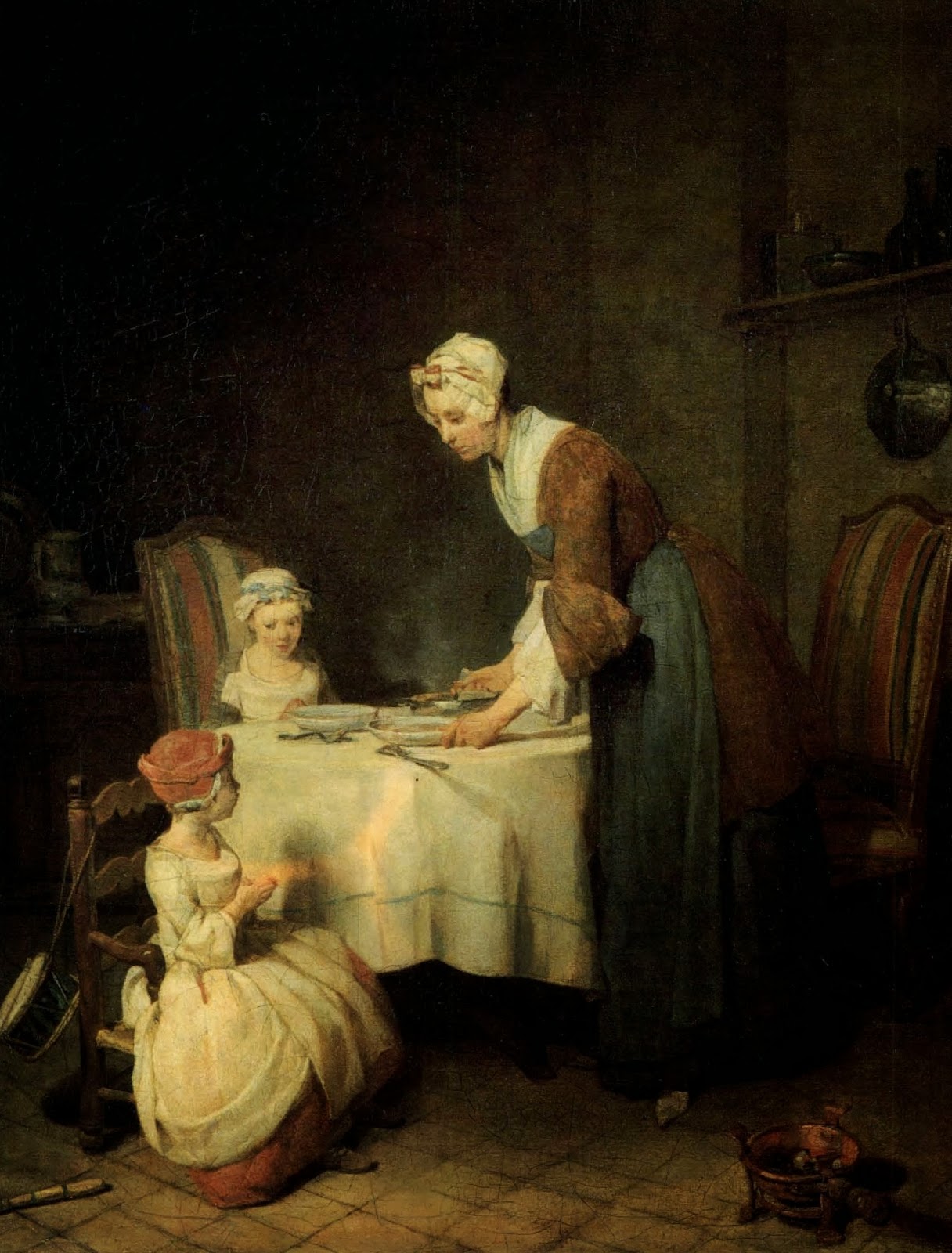Chardin: Stooping to Conquer
 |
| Saying Grace |
The Mitsubichi Ichigokan Museum is deceptive in more ways than one. Not only is it a lot younger than it looks – it was built in 2009 as a recreation of a Meiji Period building – but the interior doesn't quite match the exterior. The latter looks somewhat grand and even slightly palatial, but once inside the building is in fact rather poky, with galleries that are generally quite narrow, small, and winding.
This isn't necessarily a bad thing, as it creates a cozy, even intimate atmosphere, but it does limit the kind of art that can be displayed. For example, the large canvases by Paul Rubens now showing as part of the Liechtenstein exhibition at the National Art Center Tokyo (NACT) would never fit in. But equally, the large open spaces of the NACT would never work with the paintings now on display at the Ichigokan.
These are by the 18th-century French painter Jean Simeon Chardin, renowned for his subtle and low-key still lifes and genre paintings of normal folk, infused with a kind of French wabi-sabi. These smallish paintings would clearly struggle to dominate large, palatial spaces or the expansive white walls of the typical large art museum. They are designed to whisper to us from shady corners and gentle alcoves, which makes the Ichigokan their ideal venue.
 |
| The Good Education |
But back to la grande strategie: one almost suspects that, having seen the phenomenal rise of the Dutch painter Johannes Vermeer in recent years, those in charge of the Frenchman's legacy have decided to groom him to be the "next Vermeer."
This may be a wise strategy for a number of reasons. Firstly, there are broad similarities in subject matter (domestic) and atmosphere (tranquil) in the genre paintings of the two. There is no mythological or religious subject matter to confuse, bewilder, or alienate modern audiences.
Secondly, the craze for Vermeer may be limited by the scarcity of his paintings. When audiences have grown tired of Girl with a Pearl Earring (1665) or the perpetual pouring of the same milk from the same jug in Vermeer's The Milkmaid (1658), then they might well be drawn away by Chardin's The Convalescent’s Meal (1747). This not only features a jug and a demure maiden, but, as an added bonus, also a boiled egg and a bedpan!
 |
| The Convalescent’s Meal |
Such comments may seem exaggerated, but there is nevertheless a great charm in his work that derives from its humility and lack of ambition. Rather than striving for greatness and pretentiousness, he preferred to slowly evolve his technique with a narrow range of subjects. It was the sight of a dead rabbit that first drew him to painting. From rabbits, he slowly expanded the range of his subjects to include poultry and kitchen utensils before moving on to the genre paintings of ordinary people that represent his best work.
The exhibition includes two versions of Saying Grace, perhaps his most famous painting, which shows a mother and two daughters about to enjoy some soup. These were painted four years apart – 1740 and 1744 – and are slightly different. That he was content to paint practically the same picture again tells us all we need to know about his lack of avant-garde spirit.
But why was such humble, unadventurous art such a hit in 17th-century France? Some might see it as a cultural precursor of the egalitarianism of the looming Revolution, but a more tangible reason was the French inferiority complex with regard to Dutch and Flemish art at the time. Rejecting grand subject matter and capturing the mundane with stunning realism, this was art that stooped to conquer. Throughout his career, Chardin was best praised by being compared to Dutch and Flemish masters. The intent of this exhibition seems to be to revive such comparisons.
C.B.Liddell
The Japan Times
18th October, 2012




















Post A Comment
No comments :